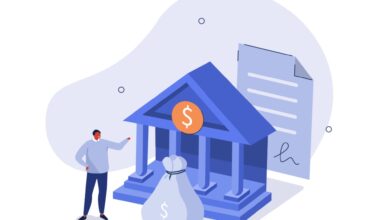Written by Michael Lee Simpson
Inside an ambulance, paramedics hover over a young man lying on a gurney. His eyes are closed, oxygen mask strapped to his face, IVs poked into his arms and legs, feet rocking back and forth from the bumpy ride. Nine minutes later, his body lies sprawled out on a table. The hospital staff works on him frantically, pumping his chest, administering rounds of drugs—but all to no avail as the EKG monitor goes flat and the sound of the machine stops beeping. A monotonous hum from the electrocardiogram makes everyone look at each other. The doctor puts a sheet over the man and mutters the words: “We’re calling it. Time of death 2:37. He’s dead.”
This scene has happened over and over again—and it won’t be the last time. The story always ends the same; a despairing example of the realities of addiction and drug abuse. This disease is so horrendous—so unpredictable. People who don’t understand it often scoff at the ones who struggle with the illness.
The U.S. spends more than $7 billion dollars a year dealing with the damage addiction puts on society. About 24 million Americans are addicted to both illicit and prescribed drugs. That being said, only eleven percent have the opportunity to enter rehabilitation facilities. Ocala’s primary problem is cocaine—and most people here have no funds to afford the luxury of treatment. Why? Because, sadly, money is the only way to receive the help you need. “People who pay for treatment are oftentimes from wealthy families and they can simply afford it,” says Dr. Steve Levine, therapist and Clinical Director at The Refuge: A Healing Place in Ocklawaha.
“We just started taking more insurance in the last couple years and that’s helped a lot of people,” Dr. Levine continues. “It’s resulted in clients having more limited stays because it requires authorization and has strict limits as to what they will pay.” Some people without insurance who desperately need the treatment will take out loans, borrow from family members, take out second mortgages or even spend money from their retirement funds. There are times when treatment can make the difference between life and death if people have long serious issues with addiction.
Jack Chappell, Executive Director/Owner of New Directions and Perspectives, runs his outpatient treatment center in both Ocala and Summerfield and accepts many clients straight out of The Refuge for their continued care. “We are aware of the high cost people experience in health care, and know how financially devastated many people are when they finally reach out for help with addiction,” Chappell says.
New Directions and Perspectives accepts most major insurances and are willing to work with all people. They review each case individually, making sure anyone who is sincerely seeking recovery is afforded an opportunity to get the help they so desperately need. Chappell adds, “Addiction is an insidious illness that relentlessly pursues its victims. If we have the opportunity to interrupt addiction’s pursuit, we do so at Perspectives.”
Transcend Recovery, an upscale chain of sober living facilities, with seven houses throughout Los Angeles, has accepted recovering people from Ocala to be a part of a their community for years. They offer a scholarship fund, but they are utilized on a case by case basis to help those in need. All decisions are made independently of any company so only the client’s recovery and best interests are factored into the scholarship decision.
Geneva Lerner, former Intake Coordinator at Sierra Tuscon, saw the struggles people were having to afford rehabilitation. She realized this kind of high-end treatment was often difficult for people. Some had the money readily available or at least had family who did. Lerner found it very painful to take phone calls from those who truly needed the help only to be told they could not afford it. Lerner said, “Some people would dip into their 401(k) and others would sell their life insurance policy. Some tried loans but were hardly ever successful.”
“I am fortunate enough to still have a family and beyond that, a family that stuck by my side, willing to help pay for my time in treatment,” says Jimmy Carney, a Sober Companion at Sober Escorts, a local operation that safely assists people to and from the places they need to go. Not everyone is as fortunate as Carney. Many have to rely on state-run facilities and what their insurance may or may not cover. “Now I see the pain and anguish of my clients and the distraught families who have no clue where to turn or what to do next.”
I myself am in recovery and went through The Refuge, which is my reason for being in Ocala. I had an addiction to prescription drugs that became progressively worse over the course of eight years. Every time I heard that tear from the prescription pad at the doctor’s office, I knew I had another month’s supply.
There are so many opinions on whether rehab is needed to recovery from addiction. Some are strongly against it. Jake Luther, says, “Thirty-grand only to be told to go do a twelve step program. Probably close to a million dollars spent on rehabs, halfway houses, physiatrists and medications. All I ever wanted was a boat and to be hugged.”
My mother, Lori Simpson, unfortunately had to learn the ins-and outs- of affording treatment for my long-standing is preferred addiction. “The best option is to find a facility your insurance company considers in-network,” Lori says. “If this is not possible, request a PPO waiver (in-network exception). Your insurance company may try to discourage you, but you have the right to receive evidence-based treatment, by qualified professionals, for this very serious illness – the same as someone with cancer. If they resist, contact the Department of Health and Human Services about your insurance company’s non-compliance. You cannot wish away addiction.”





